
10 minute read
Streets of Brighton
Photography by Tom Selmon
An. i www.instagram.com/phatbitch123/
Advertisement
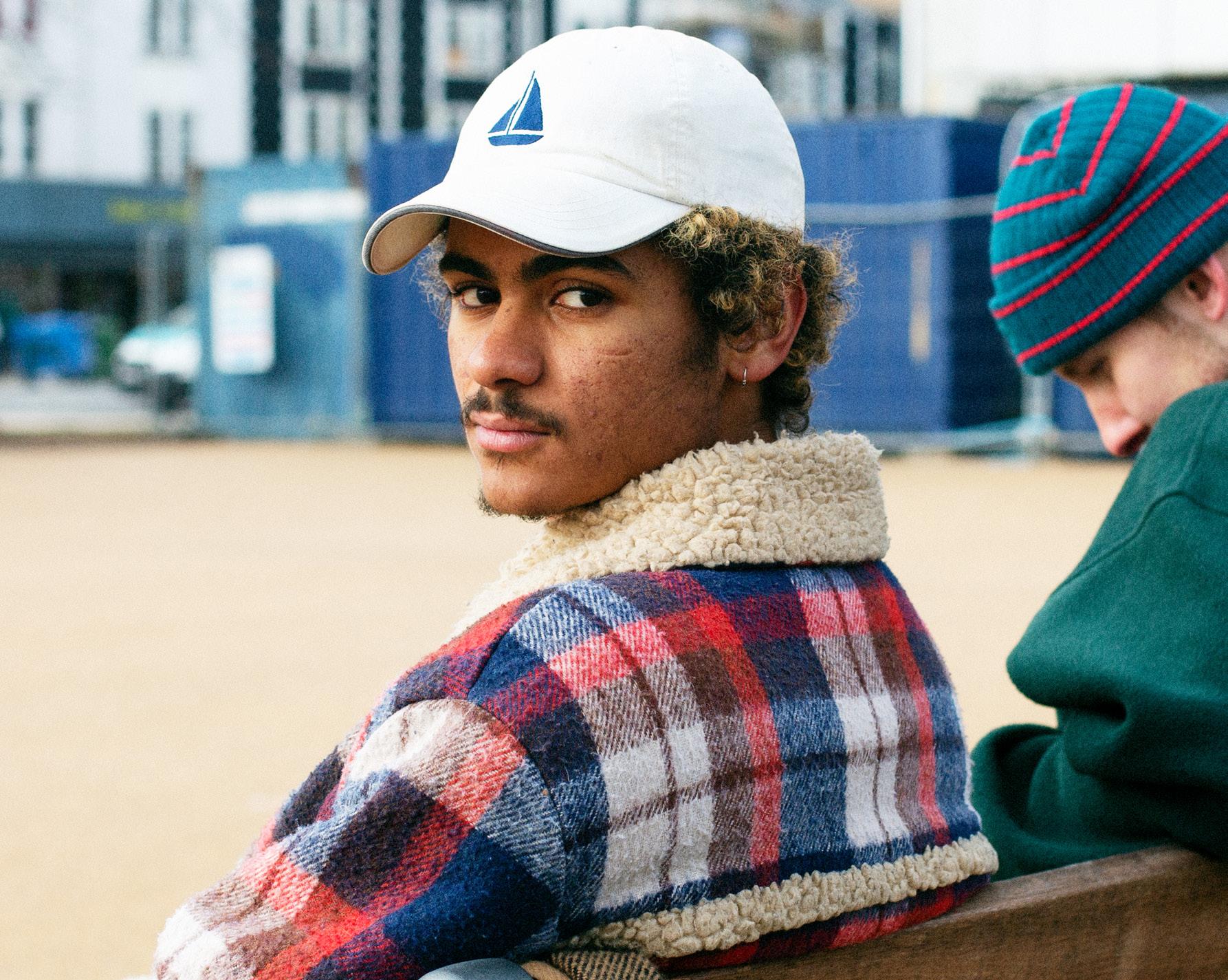

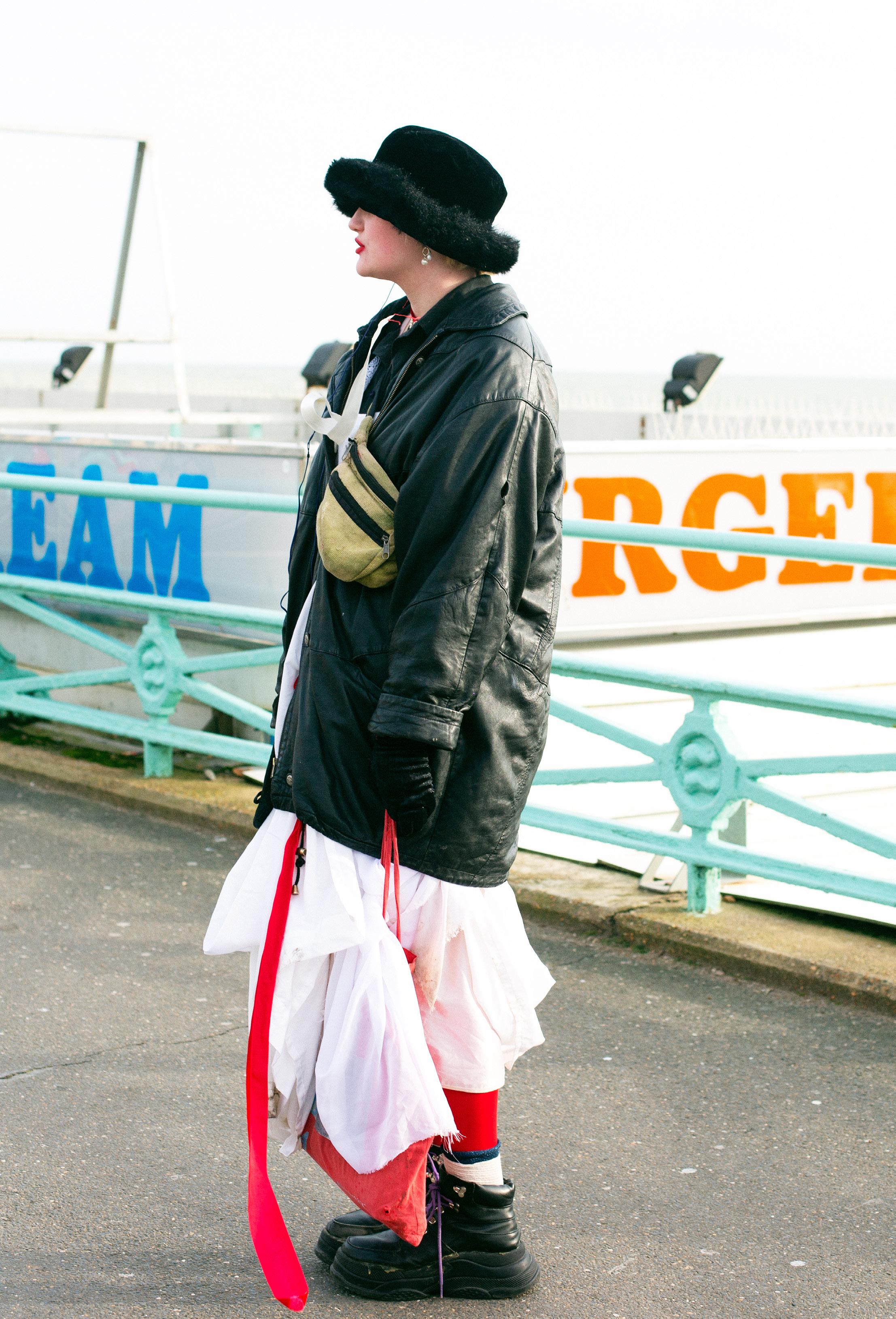
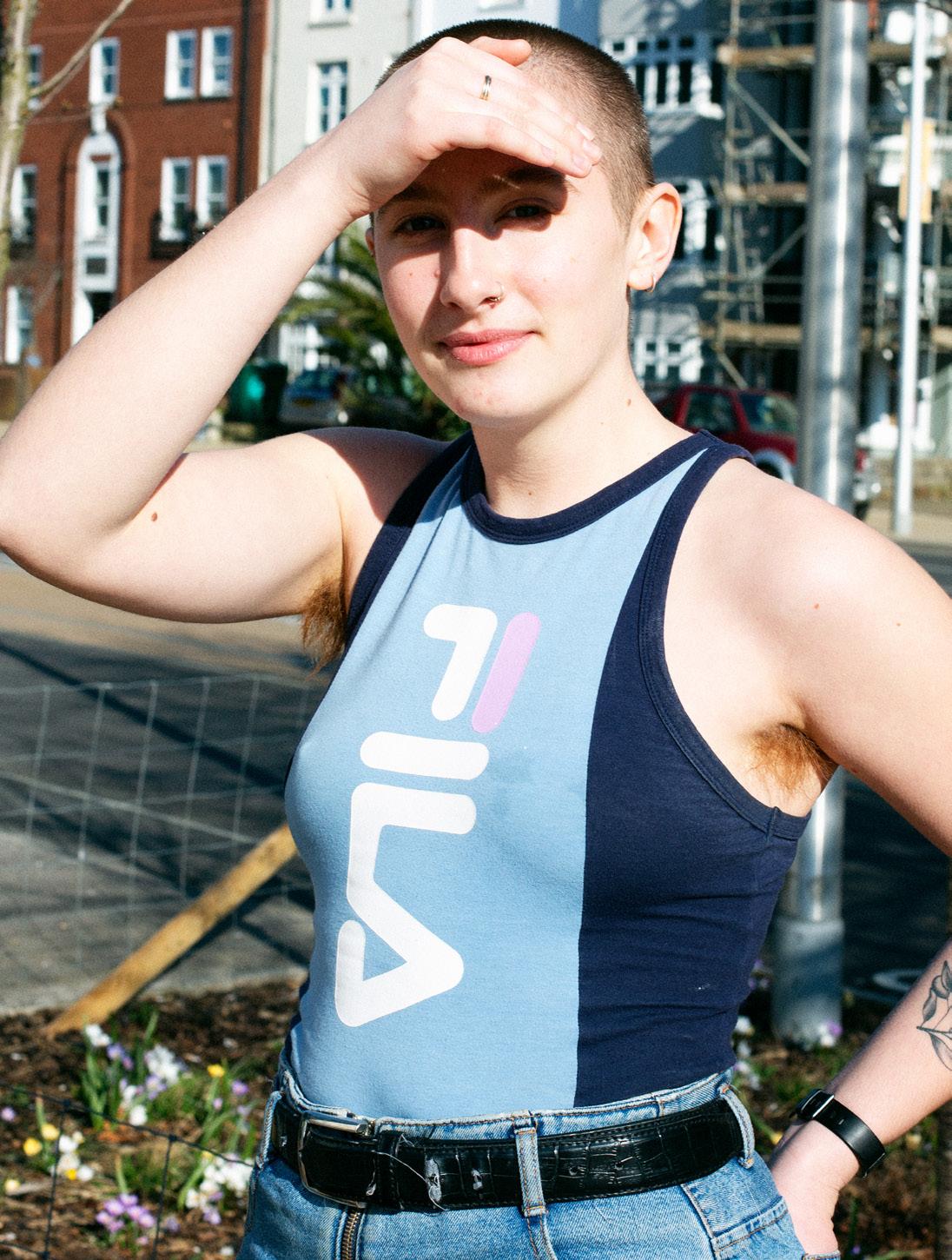
Polly. i www.instagram.com/pollyelizaa/

Rori. i www.instagram.com/duttyskank/

Joshua. i www.instagram.com/itismejoshua_



Gscene has been published every month for over 27 years, and is a rich chronicle of the history of our LGBTQ+ communities, in and around Brighton & Hove. Chris Gull raids the archives…

APRIL 2006
) So this month starts with a report on how us LGBTQ+ were represented on the BBC 16 years ago. Of course, then it wasn’t LGBTQ+, just ‘gays’. The April 2006 issue of Gscene was the ‘Yoof’ issue, with some interesting thoughts on how we as a community support young people coming on to the scene, and whether there are better gateways than bars and clubs?
GAYS INVISIBLE ON BBC?
) Gay people are almost invisible on the BBC’s flagship channels in spite of contributing £190 million a year to the BBC in TV licence fees, according to new research commissioned by Stonewall. A major monitoring exercise of 168 hours of primetime BBC 1 and BBC 2 found lesbian and gay lives realistically portrayed for just six minutes. A further 32 minutes of programming featured derogatory or offensive references to gay people. These came from a range of programmes including The Weakest Link and The Lenny Henry Show.
Tuned Out, carried out by Stonewall and researchers from the University of Leeds, found: • Even when they feature on BBC 1 and BBC 2, gay lives are five times more likely to be portrayed negatively than positively • Lesbians hardly feature in BBC programming at all • More than 50% of all references to gay people on the BBC were as jokes • Gay people living in stable relationships with partners and families are invisible on the BBC – most of the images used are clichés and stereotypes • Lesbian and gay issues are rarely tackled or even mentioned in factual programmes • Gay sexuality is frequently used as an insult, with almost no evidence of the BBC challenging homophobia when it arises The report suggests eight key recommendations to the BBC. These include provision of urgently-needed balanced and unsensational coverage in its news and current affairs programmes, developing authentic gay characters throughout drama and soap outputs and including 6% of gay contestants in game shows, reflecting the wider British population.
GAY YOUTH CORNER
Hamish Priest runs www.thegyc.com ) What is The GYC? The Gay Youth Corner is a website for young people all over the world, providing them with a place to chat, meet, discuss issues and get advice on all aspects of life.

So how did this queer take on chat come about, and how’s the communication
flowing? The GYC was formed just over one year ago and it’s now currently run with the help of over 25 voluntary staff worldwide. Our work has certainly been successful, although there is still much left to be done.

So what do you feel are the concerns of gay
youth today? At least on The GYC, and since sexuality obviously entails sex, relationships are a strong concern for gay youth. For the even younger people, actually trying to define their sexuality is a prime concern. And following this is coming out, although a lot of these things sometimes entail depression, homophobia and a lack of confidence.
How could the connection between LGBT youth and the general LGBT community be
improved? That’s a tricky question; because for a youth to be able to connect with the LGBT community in the first place, they may feel they should first come out to themselves and those around them. Although it is not a necessary condition, it does seem like a reasonable and common prerequisite. Places like The GYC are particularly helpful at this stage, because it does not assume that its visitors are LGB or T. It allows for the process of definition and discussion. So, once a gay youth is out and thus confident to connect with the LGBT community, it is an important time for LGBT youth groups to step in. The most obvious place where a gay youth is likely to go to for their first experience with the community is the gay bar and club scene, which is quite understandable. However, it is not the best place to have one’s first experience as a young queer person within a queer community, especially when the person is under the legal drinking age.
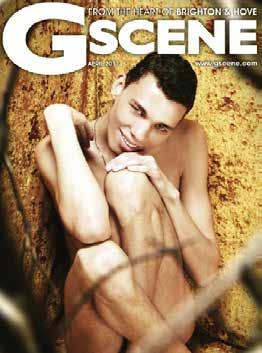
APRIL 2011
) Moving forward to ten years ago, MindOut achieved a famous victory in gaining independence from MIND. The rest is history. What was also an historic moment was The Bulldog moving forward from the review of its licence and the decisions of the council´s licensing panel, by appealing to the city magistrates, along with the police, and coming to an agreement.
MINDOUT LGBT MENTAL HEALTH GROUP GOES INDEPENDENT
) MindOut, the LGBT mental health project, has gained its independence and become a separate registered charity. On April 6, the project moves out of the local MIND offices and sets up at Community Base in Queens Road with Helen Jones leading the team. The Big Lottery Fund and the PCT have agreed that their funds be redirected to the new project and MIND will pass over to the new project the staff and the valuable reserves that MindOut had built up. The project has
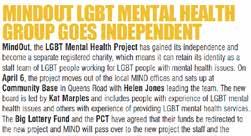
sufficient funding for the year and during that time it will be seeking new sources of funding to continue its work. MindOut’s identity was threatened last summer when its parent body, MIND in Brighton & Hove, decided to split up the team and integrate their work with other services as part of a reorganisation plan. The loss of its identity as a team of LGBT people working for LGBT people was regarded by service users and staff as fatal to the project in the longer term. The response from service users and the wider LGBT communities was swift and impressive with interventions, both public and behind-the-scenes, from local LGBT community leaders.
BULLDOG AGREES NEW OPENING HOURS WITH SUSSEX POLICE
) Dean Holmes, owner of Brighton’s oldest gay bar, the Bulldog, Sussex Police and Brighton Council came to an agreement at a
Brighton Magistrates
Court hearing on March 8, to find what Brighton Council’s legal representative described as “a way ahead for the Bulldog moving forward”. The parties ended up in Court following an appeal by Sussex Police for a review of the Bulldog licence, which was heard by city councillors in September 2015. Sussex Police and the Bulldog both appealed to City Magistrates the decision of the Council’s licensing panel, which is made up of elected councillors and chaired by Cllr Mo Marsh, Labour Councillor for Moulsecoomb & Bevendean.
The Council’s original licensing panel decision of September 2015 included reducing the Bulldog’s hours at weekends till 2am with one hour drinking up time (affecting their busiest time for trading) and reducing opening hours on Sunday to Thursday from 11am to midnight with a closing time of 1am. Under the new agreement the Bulldog gained an extra drinking hour on Friday and Saturday nights to 3am with a closing time of 4am and in return agreed to install an ID scanner which will be implemented when door staff are on duty.
APRIL 2016
) Five years ago, the community paid tribute to Chris Cooke, and BLAGSS attracted 25 teams to their annual fundraising extravaganza.
CHRIS COOKE 18.1.68–22.2.16
) Community activist Christopher Martyn Cooke died in February following a fire at Essex Place in Kemptown where he lived. Chris, a proud activist, was a very decent man. He loved nothing better than seeing practical and positive improvements to St James’ Street and Kemptown, especially if it was achieved after he had fought on behalf of others who had decided something was needed to improve the area. He would fight for a project to succeed no matter where in the community the suggestion had originated. Chris trusted everybody, he listened to people’s concerns and for someone who stood for election as a local councillor, was one of the most apolitical figures you would encounter in public lif0e locally. Up until a couple of years ago he was most involved with the St James’ Community Action Group (SJCAG) as probably the leading founder member and its first chairperson. He was proud of what SJCAG achieved during its first year and was devastated when a small section of the business members organised his replacement. Since his removal, St James’ Street has suffered from his lack of leadership and the SJCAG has lost credibility as an effective community organisation. For a while Chris was responsible for Kemptown in Bloom and hopefully his recent efforts to revitalise this group will continue and be a fitting tribute to his activities and enthusiasm. Chris chaired the Eastern Road Partnership when it was a vibrant and active association and a keen supporter of the Gay Business Forum. He worked tirelessly on neighbourhood and community policing and was involved with the Friends of Queen’s Park. He chaired the fundraising committee of the Rainbow Fund, an organisation which makes grants to LGBT organisations providing effective front line services to LGBT people in Brighton & Hove, and for a while was community correspondent for The Argus. He was also chair of the Brighton & Hove LGBT Community Safety Forum up until 2012, was financial director at the Sussex Beacon between 2011-12 and more recently was an LGBT community rep at Community Works.
James Ledward, reflecting on the work Chris delivered for the St James’ Street and Kemptown, communities, said: “Community activists are sometimes misunderstood because people just don’t understand why they selflessly volunteer so much of their time to helping others in their local community. It was painful to watch Chris lose confidence following being removed as chair of the SJCAG in February 2014 by a group of business people who would not understand a community issue if it jumped up and bit them on the nose. When he chaired the local action group, St James’ Street was vibrant and safe, which will be his lasting legacy. Sadly it no longer is.” On his Facebook page, Chris listed his favourite quote as: “We are all in the gutter, but some of us are looking at the stars.” Through his community work, Chris made people’s lives better and in doing so sometimes forgot it was important to look after and love himself.”


BLAGSS’ TEN-PIN BOWLING
) The annual BLAGSS ten-pin bowling tournament attracted 25 teams this year with the Camelford Arms coming out as overall champions. Top male bowler was Damian from Out to Swim with Paul from Bear-Patrol the runner up. £157.27 was raised for BLAGSS’ charity of the year, MindOut, the LGBT mental health project. It was great to see the Bulldog Bummers appearing for the first time who, along with Camelford Arms, New Steine Hotel and Gscene, were the only LGBT businesses present. The three main community choirs were in attendance along with community groups as diverse as Rainbow Families, Blue Print 22, GEMS, the group for older gay men who came a creditable 7th, and an LGBTQ mental health support group from Shoreham. Well done to everyone for supporting an important community event.











